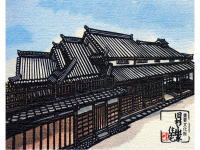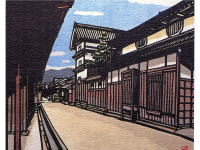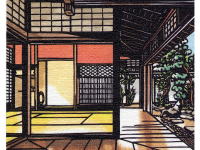富田林寺内町の探訪
I'm glad to intorduce an old town, Jinaimachi, Tondabayashi, Osaka, Japan as a national historic district and heritage site.
It takes 30 minutes from Osaka city to Tondabayashi station by Kintetsu railways. A 10-minutes walk will take you to the historic town.
ギャラリー
residence of the (south) Okutani Family
| 【Tourist guide to Jinaimachi town, Tondabayashi, a historic district and heritage site of Japan, Residence of the (south) Okutani family】 | ||||
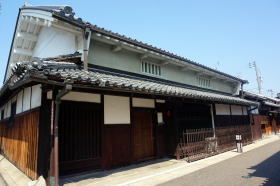 |
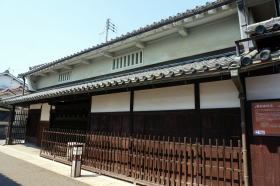 |
|||
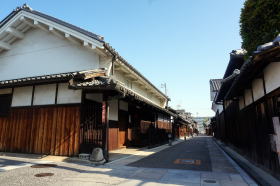 the 100 selection of Japanese roads - Jyounomonsuji street |
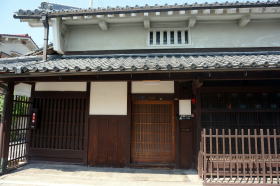 |
|||
| Yatsumune-zukuri style structure A few number of ridges is used in the builldings. The name of the building structure that has a complex roof affected by building of citadel, adding decorative elements such as Chidori-hafu, a trianglular shaped gable or a dormer bargeboard, or both combined, on the intricate plane. Sangawara-buki Method to roof a house with pantile. |
||||
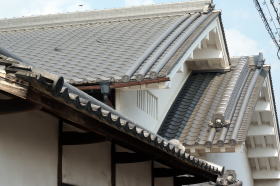 main building of yatsumune-zukuri style structure |
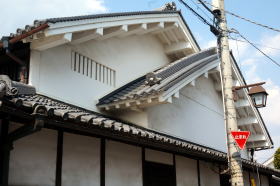 |
|||
| Kirizuma style roof a roof shaped like a half-opened book, called a gable roof or ridge roof |
||||
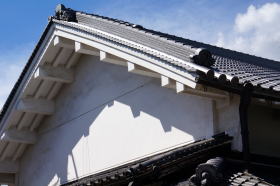 Kirizuma style roof |
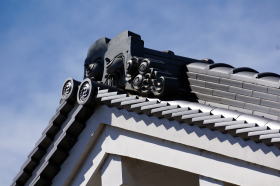 |
|||
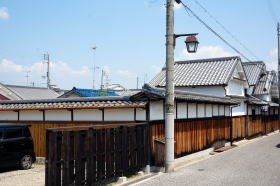 |
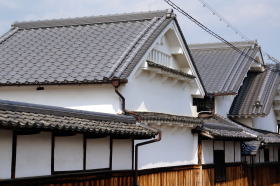 after completion of exterior repairing works |
|||
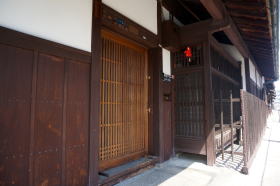 |
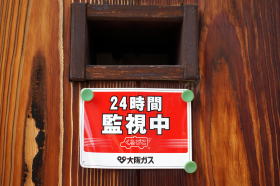 Gas meter can be seen inside and monthly consumption is measured through the small window on the wall by the utility company agent. |
|||
| Sodeudatsu (Sodekabe) Extensions of the gable parapet walls that fill the trapezoidal space between the overhanging eaves of the main roof and the pent roof. It is set up as a wall for crime prevention for a thief not to enter as well as a fence to prevent catching fire from next door in the case of the fire. |
||||
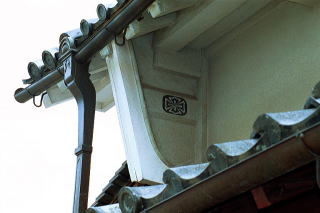 sodeudatsu (the south side of gable) sodeudatsu (the south side of gable) |
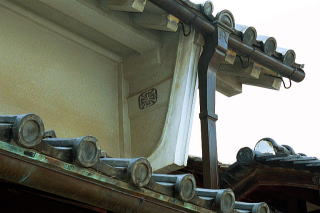 sodeudatsu (the north side of gable) |
|||
| Zushi-Nikai or Tsushi-Nikai The second floor with a low ceiling, which is seen on plastered wall of farmhouses found in Kansai region. Mushikagomado (Mushikomado) The second floor windows with a plastered grid on the plasterer wall of buildings. It is believed to have developedthrough the vent holes of the second floor with low ceiling. There are also often used in townhouses, and some are in shape of patterns and trademarks. |
||||
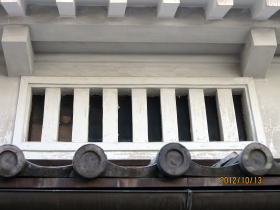 mushikomado window |
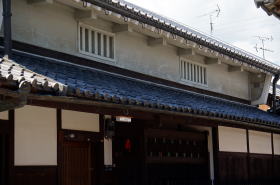 tsushi-nikai and mushikomado window |
|||
|
Atemage-no-Michi |
||||
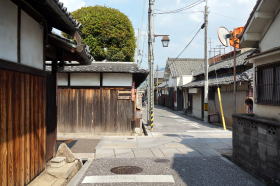 Atemage-no-michi and furuteya-bashi stone bridge |
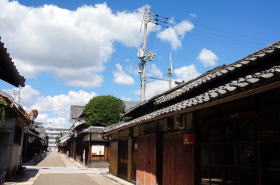 the 100 selection of Japanese roads - Jyounomonsuji street |
|||
| Youjin-Bori (Ditch for firefighting water) Youjin-Bori literally means a ditch of precautions against fire. |
||||
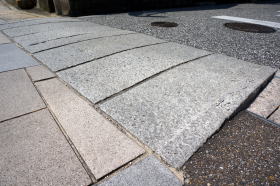 stone bridge of furuteya-bashi over Yojin-bori ditch along Jyounomonsuji street |
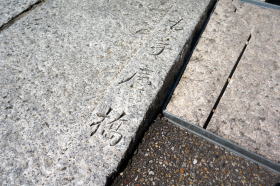 the Chinese characters "furuteya-bashi" are engraved on the stone bridge |
|||
| 【Tourist guide to Jinaimachi town, Tondabayashi, a histric district and heritage site of Japan, Residence of the (head) Okutani family】 | ||||
| 【Tourist guide to Jinaimachi town, Tondabayashi, a histric district and heritage site of Japan, Residence of the (east) Okutani family】 | ||||
| 【Tourist guide to Jinaimachi town, Tondabayashi, a historic district and heritage site of Japan, Residence of the (northwest) Okutani family】 | ||||
|
||||
Information

Not open to the public
(private residence)
Year built:
The early Meiji period
Location:
At the intersection of Jyounomonsuji street and Kita (north) Kaisho-cho street in Jinaimachi town.
Trade name: Iwase-ya
History (Origin)
Features of the buildings
The second floor extremely developed, including two rooms with a shelf
placed on the floor, but the height of the second floor of frontage is
as low as was usually built in the Edo era. The roof has is kirizuma style
structure and sangawara style roof-tiles and does not have roof-top small
roof for smoke ventilation.
The building let smoke get out through the window put in the upper gable
backward. A lot of buildings representing each time including the residence
of this family are left in Jinaimachi, Tondabayashi and we can know the
change of the life in the area by watching those changes
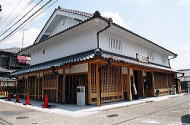
Visitor Center
(Jinaimachi Kouryuukan,
Town Community Center)
Address
9-29, Tondabayashi-cho, Tondabayashi city, Osaka, 584-0033, Japan
TEL.+81-(0)721-26-0110
FAX.+81-(0)721-26-0110
open 10a.m. until 5 p.m.
closed on Monday
The site-seeing map
available in English. Please stop by to the Tourist Information Cetnter
or Jinaimachi Visitor Center.
Restrooms
Available at Jinaimachi Visitor Center (Jinaimachi Kouryuukan), Jinaimachi
Center and Jinaimachi Tenbou Hiroba (Viewing Terrace)
Visitor Parking
Road width is very narrow in Jinaimachi town. If traveling by car, please
use Tondabayashi Municipal east parking newly opened in February 2014 (Toll
parking).
You can park the minibus for groups and passenger cars for general use.
Only one parking lot available for minibus, you must book it in advance
with Tondabayashi City Hall. A 15-minute walk to the Jinaimachi Visitor
Center and 5 minute walk up to the former Sugiyama family house, an important
national cultural property.
You will note that the large tourist bus for groups is requested to be
parked at the Tondabayashi City Hall No. 2 parking lot alongside the old
Route 170 (It must be booked in advance to City Hall). 20-minute walk to the Jinaimachi
Visitor Center and 10 minute walk up to the former Sugiyama family house,
an important national cultural property. Thank you in advance for your
kind cooperation.
